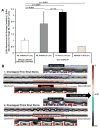Stent thrombogenicity early in high-risk interventional settings is driven by stent design and deployment and protected by polymer-drug coatings
- PMID: 21422389
- PMCID: PMC3131199
- DOI: 10.1161/CIRCULATIONAHA.110.003210
Stent thrombogenicity early in high-risk interventional settings is driven by stent design and deployment and protected by polymer-drug coatings
Abstract
Background: Stent thrombosis is a lethal complication of endovascular intervention. Concern has been raised about the inherent risk associated with specific stent designs and drug-eluting coatings, yet clinical and animal support is equivocal.
Methods and results: We examined whether drug-eluting coatings are inherently thrombogenic and if the response to these materials was determined to a greater degree by stent design and deployment with custom-built stents. Drug/polymer coatings uniformly reduce rather than increase thrombogenicity relative to matched bare metal counterparts (0.65-fold; P=0.011). Thick-strutted (162 μm) stents were 1.5-fold more thrombogenic than otherwise identical thin-strutted (81 μm) devices in ex vivo flow loops (P<0.001), commensurate with 1.6-fold greater thrombus coverage 3 days after implantation in porcine coronary arteries (P=0.004). When bare metal stents were deployed in malapposed or overlapping configurations, thrombogenicity increased compared with apposed, length-matched controls (1.58-fold, P=0.001; and 2.32-fold, P<0.001). The thrombogenicity of polymer-coated stents with thin struts was lowest in all configurations and remained insensitive to incomplete deployment. Computational modeling-based predictions of stent-induced flow derangements correlated with spatial distribution of formed clots.
Conclusions: Contrary to popular perception, drug/polymer coatings do not inherently increase acute stent clotting; they reduce thrombosis. However, strut dimensions and positioning relative to the vessel wall are critical factors in modulating stent thrombogenicity. Optimal stent geometries and surfaces, as demonstrated with thin stent struts, help reduce the potential for thrombosis despite complex stent configurations and variability in deployment.
Conflict of interest statement
Dr. Edelman reports research support from Abbott Vascular, Boston Scientific and Cordis Corporation. L. Coleman and V. Giddings are employees of and have equity interest in Abbott Vascular. K. L. Nguyen-Ehrenreich is an employee of Abbott Vascular. The remaining authors report no conflicts.
Figures






Comment in
-
Letter by Vorpahl and Kelm regarding article, "Stent thrombogenicity early in high-risk interventional settings is driven by stent design and deployment and protected by polymer-drug coatings".Circulation. 2011 Nov 8;124(19):e511; author reply e512. doi: 10.1161/CIRCULATIONAHA.111.037150. Circulation. 2011. PMID: 22064963 No abstract available.
References
-
- Windecker S, Meier B. Late coronary stent thrombosis. Circulation. 2007;116:1952–1965. - PubMed
-
- Nakazawa G, Finn AV, Joner M, Ladich E, Kutys R, Mont EK, Gold HK, Burke AP, Kolodgie FD, Virmani R. Delayed arterial healing and increased late stent thrombosis at culprit sites after drug-eluting stent placement for acute myocardial infarction patients: An autopsy study. Circulation. 2008;118:1138–1145. - PubMed
-
- Biondi-Zoccai GG, Lotrionte M, Agostoni P, Abbate A, Fusaro M, Burzotta F, Testa L, Sheiban I, Sangiorgi G. A systematic review and meta-analysis on the hazards of discontinuing or not adhering to aspirin among 50,279 patients at risk for coronary artery disease. Eur Heart J. 2006;27:2667–2674. - PubMed
-
- Angiolillo DJ, Fernandez-Ortiz A, Bernardo E, Ramirez C, Sabate M, Jimenez-Quevedo P, Hernandez R, Moreno R, Escaned J, Alfonso F, Banuelos C, Costa MA, Bass TA, Macaya C. Clopidogrel withdrawal is associated with proinflammatory and prothrombotic effects in patients with diabetes and coronary artery disease. Diabetes. 2006;55:780–784. - PubMed
-
- Baran KW, Lasala JM, Cox DA, Song A, Deshpande MC, Jacoski MV, Mascioli SR. A clinical risk score for prediction of stent thrombosis. Am J Cardiol. 2008;102:541–545. - PubMed
Publication types
MeSH terms
Substances
Grants and funding
LinkOut - more resources
Full Text Sources
Other Literature Sources
Medical

